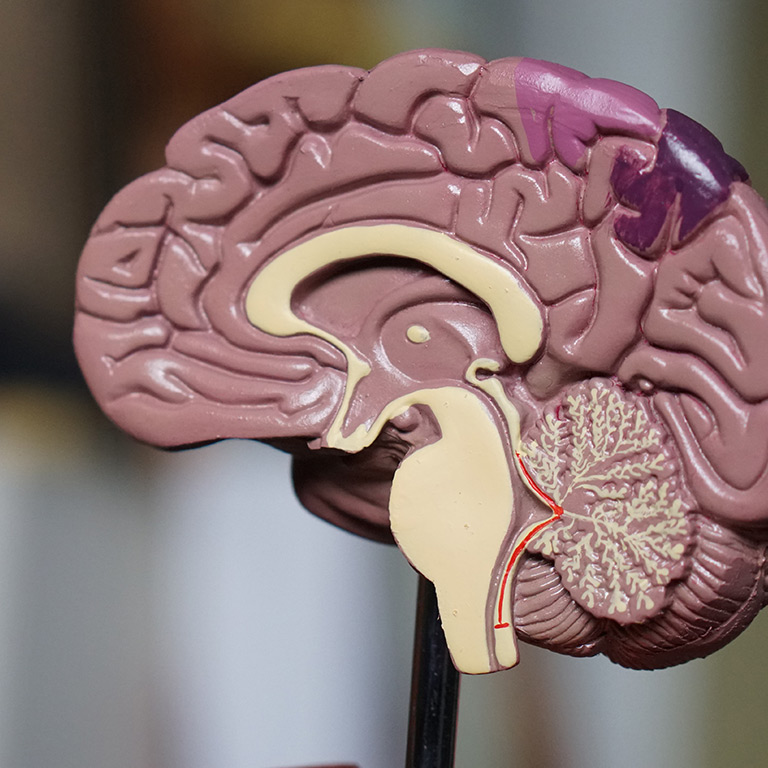


Understanding the role of cognitive bias for website owners
06/10/2021
Whether you own an online business or are involved in design and content decisions, it’s important to recognise the way your background knowledge (both about your business and sector, as well as your website or digital product) can influence the decisions you make. As we’ll explore further, this background information and experience is a double-edged sword when it comes to your marketing strategy: on the one hand enabling you to make informed decisions more quickly, and on the other hand creating blind spots that can lead to errors in thinking.
What is cognitive bias?
Cognitive bias is a phenomenon originally theorised by renowned Israeli scientists Kahneman and Tversky in the 1970s. In their experiments they noticed participants used mental shortcuts (referred to as heuristics, or rules of thumb) in an attempt to solve problems quicker, but that these shortcuts actually resulted in them making poorer and more irrational decisions depending on how the problems were framed. Their theories have since gone on to change virtually every sphere of modern society, perhaps most notably the world of behavioural economics.
So, why do these mental shortcuts exist and what has it got to do with digital marketing? Every day, our brains are subjected to an unfathomable amount of stimuli and decisions to make. It would be impossible to give each decision, especially the micro decisions, the same amount of time and energy; we would struggle to function properly. Instead, our brains rely heavily upon context to subconsciously guide our decisions and behaviour. Whilst this is fine for essential day-to-day functioning, research has shown that the context in which something is framed, can powerfully influence our behaviour, even to the point of encouraging us to make an error in judgement. Let’s look at a well-used example from the marketing world.

In the example above, the way the products are framed alters the context we analyse them in. This context heavily influences the way we might evaluate two propositions that are exactly the same, and ultimately can determine the behaviour we’ll elicit. Let’s now take a deeper dive into what cognitive biases mean for website owners and digital marketers.
Mental models and the ‘curse of knowledge’

When it comes to the digital world, cognitive biases can be both a blessing and a curse, which is why it’s so important for people that make decisions about websites and digital products to understand how to avoid the pitfalls, and how to profit from the opportunities.
In User Experience (UX) design, a lot of recognition is made around the danger of relying on our expertise in day-to-day design/usability decisions. Whilst this may sound counterintuitive, UX design draws attention to the fact that digital products shouldn’t be designed and managed with the expert in mind, it should be designed for the end user. Is it possible to use our expert knowledge to accurately guess what kind of experience users have when interacting with our business online? In short, no. Our biases leave us with a ‘curse of knowledge’ since we can’t unknow what we know, whether it’s about our products or services, or about the way our website or app works.
A well-known UX law, known as Jakob’s Law, tells us that users come to a website with their own unique mental model of how they think the software will work, not necessarily with the mindset of the stakeholders who are responsible for designing/managing it. Users also bring with them all their background knowledge and experience using other websites and apps. This means that when users (especially new ones) visit your website, they’re primed with a bunch of expectations and thoughts that are unique to them; if they subsequently experience something unexpected on your site, which they deem as being different or frustrating, this resulting mismatch can create friction and lead to them coming away with a poor experience.
If we only make decisions based on what we know, without actually researching what we don’t know, we’ll end up allowing our cognitive biases to leave a bunch of blind spots in our strategy. In fact, this dynamic is a well-known type of cognitive bias called the availability heuristic; it describes our tendency to use the information we have that's easily available to make decisions about the future. It is for this reason that user research is the foundation of good UX design and should form an integral part of any sound online marketing strategy. In fact, user research should not only be something that’s done at the beginning of a design process, but should be seen more as a crucial tool in ongoing marketing endeavours, bringing added validation of things you succeed with, and correction when you err.
Using cognitive biases in marketing
As we’ve mentioned, cognitive biases can be useful in marketing when you’re aware of the dangers they can cause too. From the many cognitive biases that have been identified, we’ve selected a few common ones that present positive opportunities for marketers.
Mere exposure effect
This cognitive bias highlights our tendency to view things that feel familiar more favourably than things that feel unfamiliar. Marketers can exploit this tendency by targeting existing/previous customers (since they are more familiar with your business than new customers), expanding the number of channels your content and messaging is on (the more users see the messaging, the more familiar it will be), and simply by using consistency to a greater effect in a website or digital product.
Compromise effect
This effect refers to our preference to compromise when presented with complicated decisions and choices. A very common example of this, used to great effect online, is the scenario whereby users are required to choose a service/subscription level and are presented with 3 options. Research suggests users will more commonly select the ‘compromise option’ in the middle, than landing on the options at either end of the pricing spectrum.
Anchoring bias
Similar to the concept of framing that we already discussed, anchoring bias refers to our tendency to hang onto a single piece of information, which anchors us when making decisions. This tendency can be useful for website owners and marketers because it highlights the opportunity to guide users in the direction you’d like them to go in. A simple example of this can be seen from research that charitable organisations undertook to determine whether giving users a suggestion of how much to donate would affect the amount of donations made. They found that giving users a suggested amount reduced the amount of interaction users had to make to place a donation, and reduced the amount of thinking they had to do – all of which led to a higher number of donations.
Loss aversion

Loss aversion refers to our tendency to evaluate losses more severely than gains. A classic example of this is when you’ve spent time filling out an online form and you’re beginning to tire of it, but the progress bar helps keep you going because you don’t want to lose the inputs you’ve made. Similarly, retailers often use countdown timers or messages like “only 1 left in stock” to create a sense of urgency and make you feel like you’re going to lose out if you don’t secure the purchase.
Confirmation Bias
This cognitive bias refers to our tendency to seek, favour and recall information that we agree with and that reinforces our beliefs and ideologies. Whilst this is a common pitfall for researchers, it is often used to great effect by marketers – especially journalists and copywriters. If you can frame an article or piece of content in a way that appeals to users existing beliefs or values, it can often increase engagement levels and elicit more positive outcomes.
If you would like to speak to a member of the team about UX research or UX design services, please get in touch today to see how we could help you.
